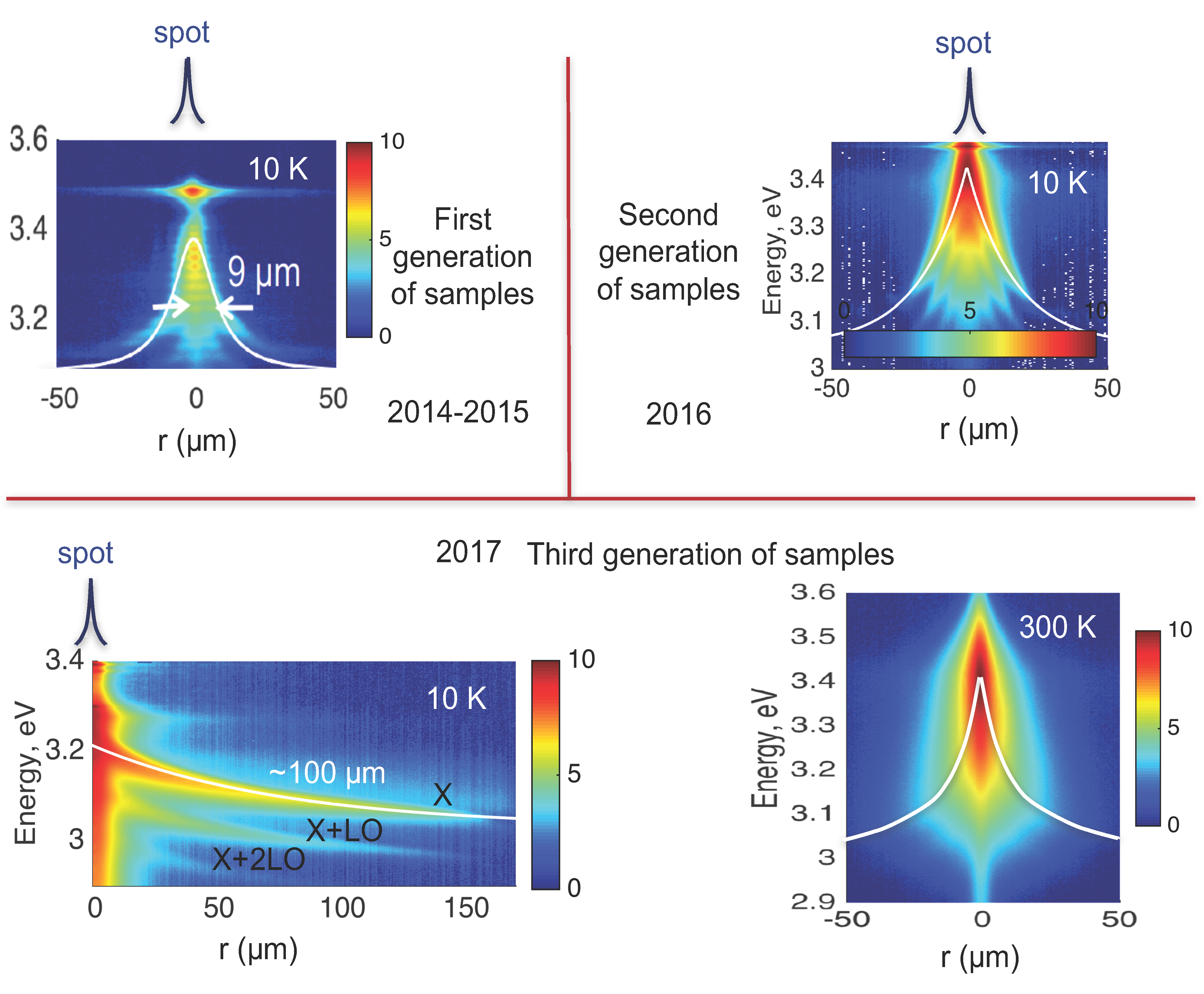Rechercher
Accueil > La Recherche > Axes & Equipes > Physique de l’Exciton, du Photon & du Spin > Optique des états collectifs et des spins (OECS) > Etats collectifs dans les semiconducteurs > Excitons indirects
Transport of indirect excitons in wide-bandgap semiconductor quantum wells
publié le , mis à jour le
Excitons in polar group-III nitride quantum wells (QWs) are naturally indirect, because electron and hole within such excitons are spatially separated. As a consequence, they have strong dipole moments and long radiative lifetimes. Extensive studies of indirect excitons (IXs) in GaAs-based heterostructures have shown, that a combination of these two features results in many interesting properties of IXs : they can propagate over large distances, can be controlled in-situ by light and external gate voltage, cool down to the lattice temperature before recombination, and form cold and dense gas of interacting bosons. Compared to traditional IXs in arsenide heterostrutures, IXs in nitride QWs have much larger binding energies and smaller Bohr radii. This allows exploring IX propagation up to room temperature, and over two orders of magnitude higher density range.
We demonstrated exciton propagation in GaN/AlGaN and ZnO/ZnMgO quantum wells. The key ingredient to achieve this result is the crystalline quality of GaN quantum wells grown on GaN substrate that limits nonradiative recombination. From the comparison of the spatial and temporal dynamics of photoluminescence, we conclude that the propagation of excitons under continuous-wave excitation is assisted by efficient screening of the in-plane disorder. Modeling within drift-diffusion formalism corroborates this conclusion and suggests that exciton propagation is still limited by the exciton scattering on defects rather than by exciton-exciton scattering so that improving interface quality can boost exciton transport further. Our results pave the way towards room-temperature excitonic devices based on gate-controlled exciton transport in wide-band-gap polar heterostructures.
We have engineered the trapping and cooling of the fluid of indirect excitons within 100µm-long electrostatic trap. We are now able to control the density and temperature of a macroscopically thermalized exciton cloud.
Dipolar excitons offer a rich playground for both design of novel optoelectronic devices and fundamental many-body physics
F. Chiaruttini et al., Nanoletters (2019) 19 : 4911 arXiv:1902.02974
F. Fedichkin et al, Phys. Rev. Applied 6,014011 (2016)









